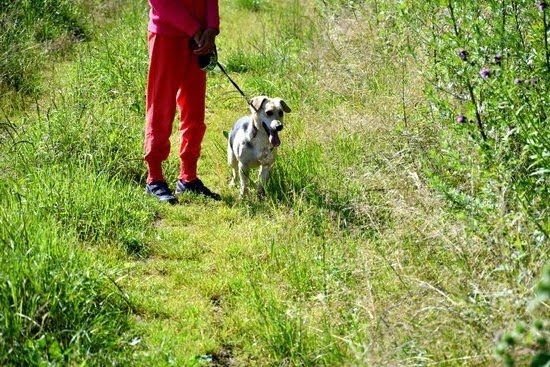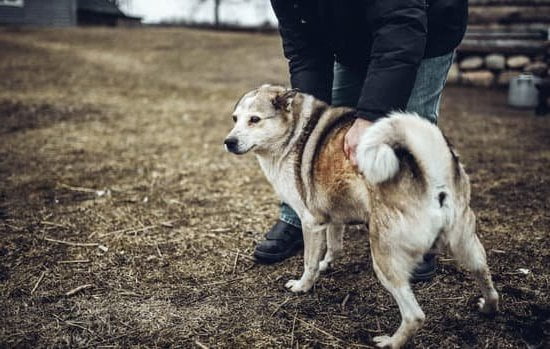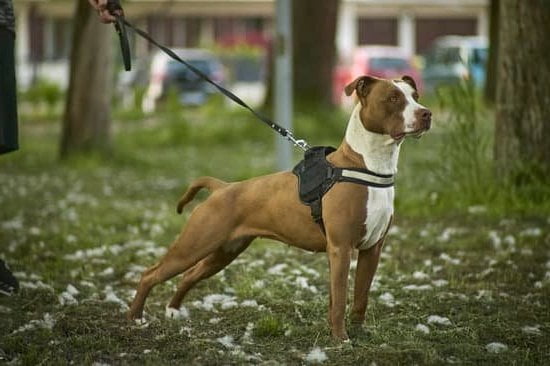Introduction
When it comes to training a dog, using quality equipment is important. It helps make the experience more productive and efficient, while also reducing instances of injury or accident. So what differentiates good quality dog training equipment from the bad?
Good quality dog training equipment is designed with comfort and safety in mind, with features that include durable materials such as nylon webbing for collars and adjustable straps for secure fitment. Additionally, good quality equipment will include instructions on how to use the product correctly and safely, information on suitable application methods, plus advice on how to measure your pet’s size for an appropriate fit. Moreover, high-end materials are typically used for premium products – stainless steel tags instead of plastic tags and genuine leather leads over imitation ones –as they stand up better against wear and tear enabling them to last longer. Finally, good quality pet stores will only stock tried-and-tested products which have been tested by independent organizations to ensure their effectiveness in providing results.
Types of Dog Training Equipment
When it comes to training your dog, there is no shortage of dog training equipment available. From choke collars and shock collars to whistles and clickers, there are a variety of products available that can help make the process easier. The type of equipment you select should be tailored towards the needs of the individual dog, taking into account the size, age, personality and temperament of your pup.
One popular type of dog training equipment is a choke collar or chain slip collar. Choke collars are designed to provide a mild “correction” when used correctly–that is, a slight tightening (not choking!) as your pup pulls on his leash or attempts an unwanted behavior. This correction helps teach him which behaviors are acceptable during walks and discourage unwanted ones. While they can be effective at curbing pulling habits in some dogs, choke collars must be used with caution and supervised by an experienced trainer who can ensure that your pup receives appropriate corrections without sustaining any unnecessary physical damage. Additionally, these collars may not be suitable for young puppies or small breeds since their delicate necks could be more easily injured by the correction provided by a choke collar.
Shock collars offer another way to achieve correction through electrical impulses sent through contact points on the collar when activated. While they can be extremely effective in preventing unwanted behaviors like jumping up on visitors or running off during walks, they should also be used with caution as improper use can cause unnecessary physical pain or stress for your pet. If you choose to use one of these devices, make sure you’re properly trained in their operation beforehand and constantly assess the device’s effectiveness with each use.
In addition to corrective devices like chains and shocks, you might choose other forms of dog training equipment such as whistles or clickers which produce an audible sound for positive reinforcement during training sessions either alone or combined with treats. Whether it’s rewarding good behavior or teaching basic commands these audio queues will help reinforce desired behaviors so choose sounds that best suit your pup’s personality while still providing adequate instruction when needed!
Essential Dog Training Equipment
Dog training equipment is vital in ensuring success with any dog training program. Training a dog properly requires the use of specific items that can help you keep your pup obedient and aid in their learning process. Some of the essential pieces of equipment you should consider investing in include: a crate and a comfortable bed, obedience collars (including head halters, choke collars and bark collars depending on needs), leashes (including long leashes for exercising or teaching specific behaviors or activities), treats and rewards for positive reinforcement, toys for mental stimulation, an adjustable exercise pen for supervision when needed, clickers for marking desired behaviors and a long line that allows your dog the freedom to roam while still observing them from afar. Investing in the right tools will save time, minimize frustration and maximize results when it comes to training your pup.
Quality Dog Training Equipment
When it comes to training your canine friend, having the right equipment is essential. Investing in quality dog training equipment is not only good for your pup’s behavior but also important for their safety. Identifying the best products on the market can be difficult, given that there are so many options to choose from. First and foremost, it is important to look for products that are made of safe, durable materials. If a product is made of flimsy materials or with loose components, then it is more likely that these could harm your pet or malfunction. Metal leashes and harnesses tend to be more durable than nylon ones.
When choosing treats for positive reinforcement during training sessions, opt for healthy snacks like baked chicken strips or freeze-dried liver as opposed to processed treats packed with sugar and preservatives. Additionally, look for break- Away collars with an easy buckle feature for added safety in case your pup becomes entangled inadvertently in something. Lastly, consider investing in professional grade clicker trainers as they provide consistent feedback without raising the pitch of your voice. By taking the time to find well-made quality dog training equipment you will be able to ensure that both you and your puppy have a successful learning experience!
Safety Tips for Dog Training Equipment
Dog training equipment is a must-have for any dog owner, as it is essential to helping your pup learn and grow. However, mastering new skills can also be challenging and dangerous for both you and your pooch, so it’s important to practice safety precautions when using these tools.
To ensure that everyone involved in the training is kept safe, it’s highly recommended that you get educated on how each piece of equipment works before ever using them with your pup. You should also take time to inspect the material quality of all dog training equipment prior to use — if anything looks worn or frayed, it may be best to replace them right away. Also make sure that your collar or harness fits properly, as this will enable you to maintain better control over your fur friend (and reduce risk of choking/strangulation accidents).
In addition to this, always keep an eye out for signs of distress in regards to your pup’s behavior during their interactions with any dog training equipment. If it appears that they are becoming overwhelmed or uncomfortable at all, take a break from the activity and adjust accordingly. It’s highly recommended not to pressure your pet too much — if something isn’t working move on! Lastly, never leave your four-legged friend unsupervised with any tools —both for their own protection and yours!
Training Techniques for Using Dog Training Equipment
When using dog training equipment, the most important factor to maximize effective results is consistency. This means that the same techniques should be used each and every time the equipment is used, in order to create consistency in the dog training process. For example, if a particular verbal command works for teaching one behavior to your dog – such as “sit” for instance – make sure that you always use that exact same phrase during every session. Additionally, having an appropriate reward system in place encourages repeat performances of desired behaviors. Not only do dogs respond best to positive reinforcement after they have obeyed a given command, but this also helps them understand exactly what behavior it is you are trying to teach them.
Apart from consistency, monitoring is another crucial part of maximizing effectiveness when using dog training equipment. Make sure to observe your pooch’s reaction and responses during the course of a lesson so you can determine how successful or unsuccessful certain techniques were during that session. You can then tweak any equation accordingly before moving on to the next step of training. Finally, timing plays a huge role when it comes to easily training your pup with specific tools or methods; try not to let too much time lapse between lessons, as this will only confuse them and hamper progress. By maintaining these three elements in balance throughout the entire training process – consistency, monitoring, and timeliness – you can ensure maximum effectiveness when introducing new devices or tools into your pet’s education process!
Common Pitfalls to Avoid When Utilizing Dog Training Equipment
1. Not giving rewards quickly enough: Dogs learn from positive reinforcement and if their reward is delayed, they may not associate the action with it immediately. Quick rewards will help your dog understand which behavior will result in that reward and make training more successful.
2. Using too many corrections: It is important to use positive reinforcement for successfully trained behaviors rather than only correcting a behavior when it fails to meet standards. Too many corrections can lead to disengagement, confusion or frustration in your dog.
3. Starting with equipment too soon: Dog training should always start with basic obedience commands and socialization before introducing any sort of specific equipment like leashes, agility courses, or play toys. Starting with the equipment too soon could introduce things that are too complex for your pup’s current stage of development.
4. Focusing on one piece of equipment at a time: Don’t forget that there are multiple tools available for dog training; don’t focus solely on one piece of equipment without giving thought to the other options that might be even more effective in helping you train your pup. Utilize different pieces of equipment, providing as much variation as possible while you are consistent in your methods.
5. Punishing mistakes: Mistakes happen during the learning process so never punish a dog for making an error but simply provide gentle guidance and try again instead. Training should be an enjoyable experience and punishing mistakes can create fear or frustration between you and your dog which could damage trust over time and slow down the learning process significantly
Conclusion
Using the right dog training equipment can lead to an extraordinary relationship between human and canine. Properly equipped, you will be able to train your dog effectively and enjoy the rewards of their progress each day. Your canine will benefit psychologically and physically, as well as gain a sense of self-esteem knowing they’re an effective team member that can bring joy to you. The bond with your pup will be strengthened as trust builds with established communication skills via the use of the appropriate tools for proper dog training. All behavior issues and problems can not only be addressed but resolved through skillful use of proper training equipment. With confidence, encouraging attitude, and patience, you will reap the rewards of optimal dog training equipment usage for many years to come.

Welcome to the blog! I am a professional dog trainer and have been working with dogs for many years. In this blog, I will be discussing various topics related to dog training, including tips, tricks, and advice. I hope you find this information helpful and informative. Thanks for reading!





